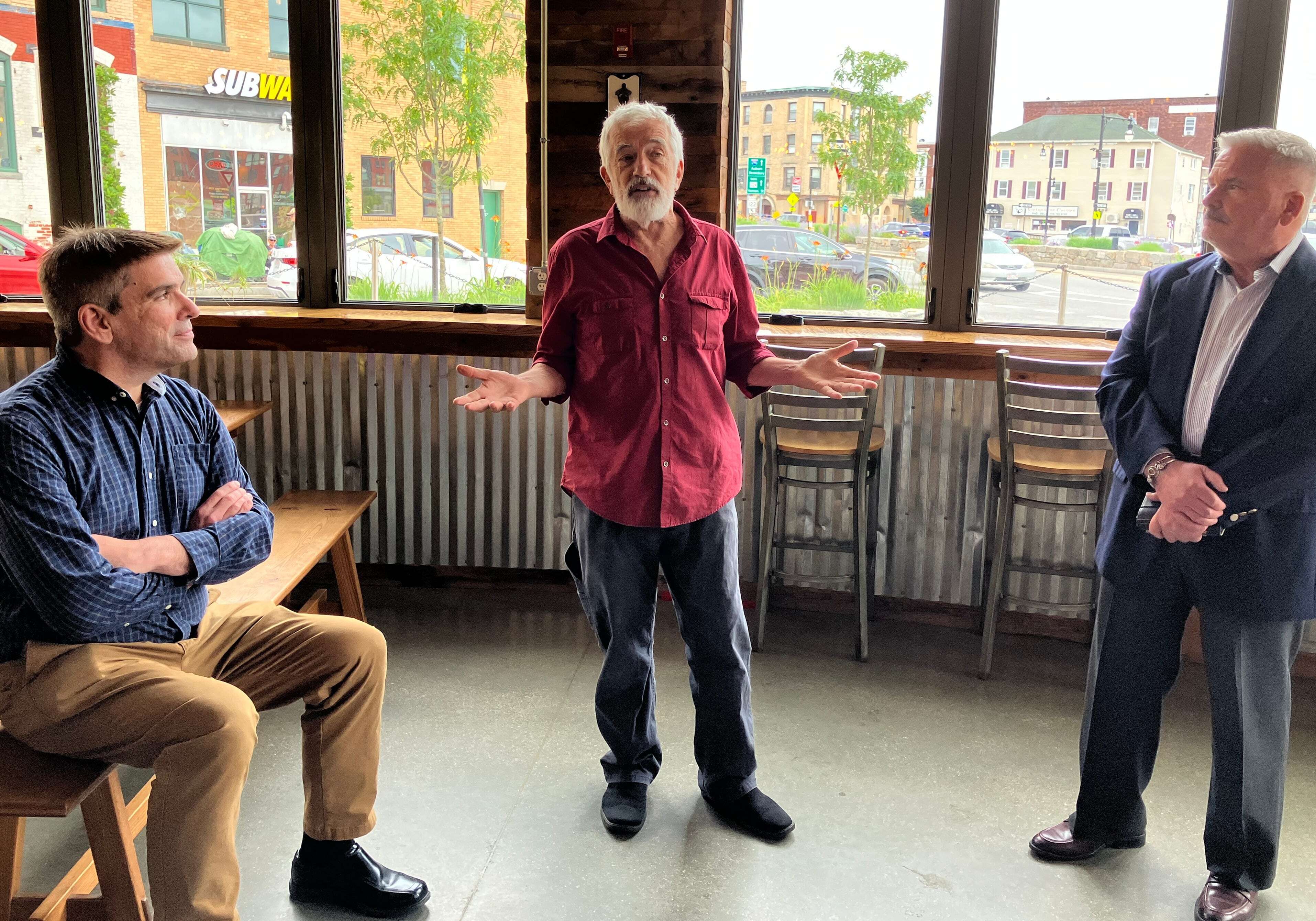Springfield Eyes Worcester's Marketplace Success for New Food Hall

Worcester Public Market: A Model for Springfield's Food Hall Ambitions
The chaotic Kelley Square intersection in Worcester has long been a source of local humor, but for Allen Fletcher, it's the key to his successful food hall and marketplace. As Springfield officials explore the possibility of creating their own food hall to attract tourists and boost the local economy, they've turned to Worcester as a model. Economic development experts and city leaders recently visited the city to learn from Fletcher’s experience.
Quincy Marketplace is often cited as one of the most historic and famous food halls in New England, but similar concepts have emerged in other parts of the region, including Maine, Hartford, and Central Massachusetts. The Worcester Public Market, which opened in February 2020, is now part of this growing trend. Fletcher credits the location’s high traffic—30,000 cars pass through the area daily—as a major factor in its success.
Springfield's Vision for a Food Hall
A working group on tourism within the Springfield City Council has identified the creation of a food hall as a potential way to stimulate economic activity. Now, the city has hired a consultant to explore the feasibility of such a project. City Councilor Sean Curran, who led the working group, believes the real estate aspect is crucial to making the idea work. He also hopes to attract developers interested in building housing in downtown Springfield, with the goal of replicating the Worcester model by integrating housing into the space.
Curran also suggested partnering with the University of Massachusetts’ food science and hospitality divisions to add a unique dimension to the concept. This collaboration could bring expertise and innovation to the food hall, enhancing its appeal to both residents and visitors.
The Worcester Public Market Experience
The Worcester Public Market is more than just a place to eat—it's a community hub that supports small businesses and attracts tourists. Located in a building that includes 48 apartments, the market operates on the first floor with 28 spots for small vendors, a 106-seat food court, and an attached restaurant for Wachusett Brewery. Designed as a non-profit, the market fosters a sense of synergy among its tenants.
Walking through the three aisles, you’ll find a jeweler next to a chocolatier, an Irish imports store across from an Italian gelato shop, and a variety of ethnic restaurants. The mix of vendors creates a vibrant atmosphere where businesses support one another. For example, Izabella Luiz, owner of Sweet Pan Gourmet, moved her Brazilian pastry business into the market four years ago and has no regrets. She credits the increased foot traffic and the supportive community for her success.
Ellen Walsh, a barista at a coffee stand created through a partnership between Monsoon Roastery and Spilled Milk Gang, agrees. She notes that the friendships formed between businesses are invaluable. In fact, Luiz even made Walsh’s wedding cake.
Lessons from Worcester
Fletcher’s journey to create the Worcester Public Market was not without challenges. His initial vision included a butcher, fresh vegetable stand, and bakery, but he quickly realized that the Canal District wasn’t the right location for those businesses. Instead, he shifted focus to attracting people visiting Polar Park for minor league games or employees looking for lunch.
Flexibility was key. He learned that the market needed to be a place for “recreational shopping” rather than a traditional grocery store. The combination of vendors is essential, and he emphasizes the importance of balancing the number of restaurants to avoid oversaturation. Natural partners include those who sell pastries, coffees, and other drinks.
The design of the public market was intentional, with a central seating area under skylights that brings the space to life. The layout is easy to navigate, addressing a common issue in other food halls. The Wachusett Brewery, while a separate restaurant, is open to the rest of the marketplace through a large overhead door, allowing people walking by to see inside—a smart marketing move.
Future Plans and Challenges
Operations at the Worcester Public Market have evolved over time, with current rents for smaller booths set at $750 per month. The market primarily serves start-ups, with 75% of the businesses run by women and 78% ethnically owned. Including utilities and trash collection in the rent has proven beneficial, and the market also asks business owners if they would pay a 5% fee or $35 monthly to help promote their businesses.
Pop-up locations and special events further enhance the market’s appeal. These rotating vendors bring new energy, and some have become permanent tenants. Events like a wrestling competition on a Tuesday and a Cuban chef demonstration for a Spanish class have attracted new shoppers.
Springfield’s Path Forward
While the idea of a similar food hall in Springfield is still in its early stages, economic development chief Timothy Sheehan believes it could work. He emphasized the need for a developer with a viable business model and a solid parking plan. Retrofitting an existing building, rather than starting from scratch, could be more effective.
Ted Spitzer, the city’s consultant from Market Ventures Inc., said the first step will be to attract a developer and study case studies from other markets. He agrees with Curran that a mixed-use development is the best path forward.
This isn’t the first time Springfield has considered a food hall. Anne Burke, a retired member of the Economic Development Council of Western Massachusetts, recalls discussions about opening one in the old Basketball Hall of Fame in 1997. Despite the time that has passed, the idea remains relevant—and with lessons from Worcester, it may finally come to life.

Post a Comment for "Springfield Eyes Worcester's Marketplace Success for New Food Hall"